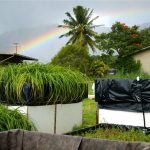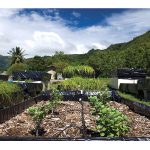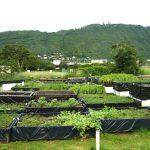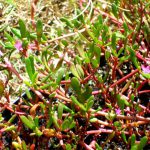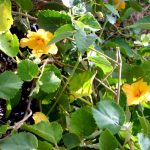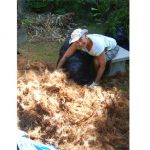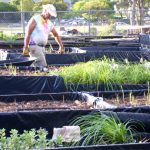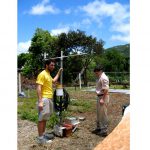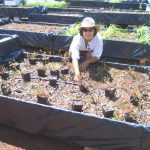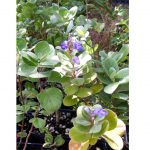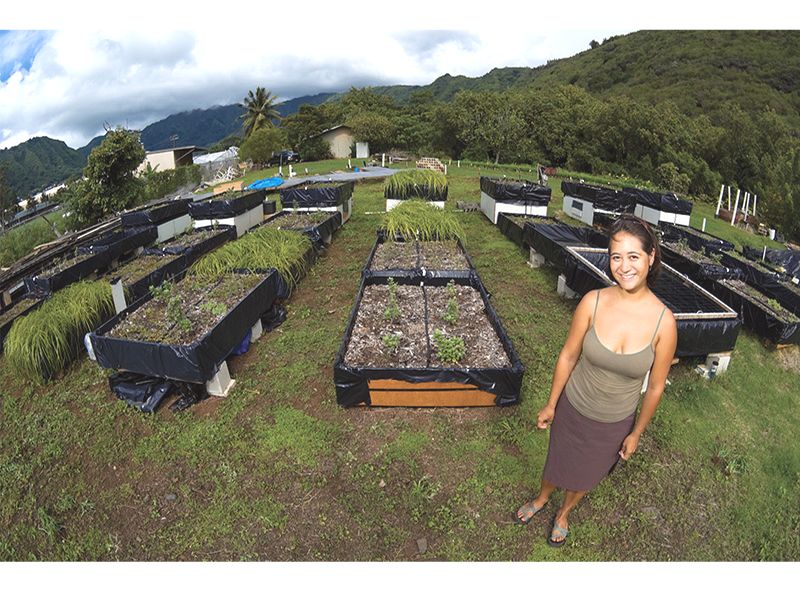
Additional Resources
Additional information: Leyla’s academic website: http://www.botany.hawaii.edu/gradstudentpages/Leyla_Cabugos.htm
Plant Propagation Database: http://pdcs.ctahr.hawaii.edu:591/hawnprop/moreinfo.htm
SeaGrant Green Roof page where you can read more indepth about the various testing experiments: http://imina.soest.hawaii.edu/seagrant/CSBCD/projects/Green%20Roof.html
Hawaii`s first institutional green roof research has been underway at the University of Hawai`I at Manoa (UHM) since August, 2007 on the Capital Isle of O`ahu. The project was developed as a masters (MS) thesis research project by Leyla Cabugos in the Department of Botany, and involves the efforts of seven academic departments and numerous volunteers. The project is designed to provide baseline information for the development of living roofs in Hawai`I, and a prototype for future green roofs on the UHM campus.
The plants, horticulturally-established native species selected from coastal dryland environments, have been growing in the ground-level planters since August, 2007. Climatic variables are recorded on site on a continuous basis to characterize conditions affecting plant growth and evapotranspiration rates, and to allow comparison with studies from other areas. Information on water balance and spontaneous plant recruitment are reported to project the maintenance needs and environmental performance of plantings in this region. The experiment is built to accommodate future studies of building temperature dynamics with green roofs in the Hawaiian climate. The research is supported by a UHM Chancellor’s Sustainability Council Seed Grant, and by material donations from Swinerton Builders, Colbond USA, Hawaiian Irrigation and Sprinkler Company (Hisco), Hawaiian Sunshine Nursery, Hui Ku Maoli Ola native plant nursery, the UHM School of Architecture and Office of Buildings and Grounds.
The layering system includes a recycled plywood box frame, (improvised) waterproofing of 4mm plastic dropcloth, an Enkadrain 3811R drainage fabric, and a local soil mix consisting of 2 parts black cinder from the island of Hawai`I, one part locally produced compost and one part coconut coir (chips and dust imported from Sri Lanka, mixed with local material shredded in a hammermill. We were trying to see if locally produced coir could be a viable substitute for imported material).
Volunteers mixed and moved eight cubic yards of soil media into the planters by hand, and installed 580 perennial plants. The elevated boxes were designed to accommodate thermal insulation for the purpose of comparing temperature dynamics below green roofs and bare roof control plots.
The plots were irrigated for the first month with ½” Netafim lines, and 2 gal/hour Rainbird emitters. After the summer installation period, the valley received enough rain to make irrigation unnecessary. The precipitation gradient from the back of Manoa Valley to the campus at the mouth, a distance of less than 3 miles, spans the range of 120-40″ per year.
 Greenroofs.comConnecting the Planet + Living Architecture
Greenroofs.comConnecting the Planet + Living Architecture
